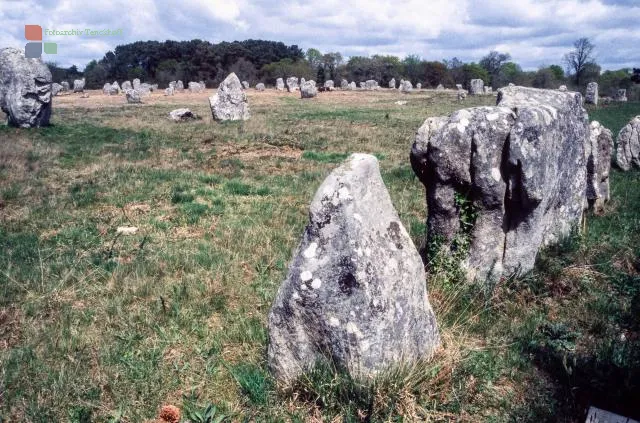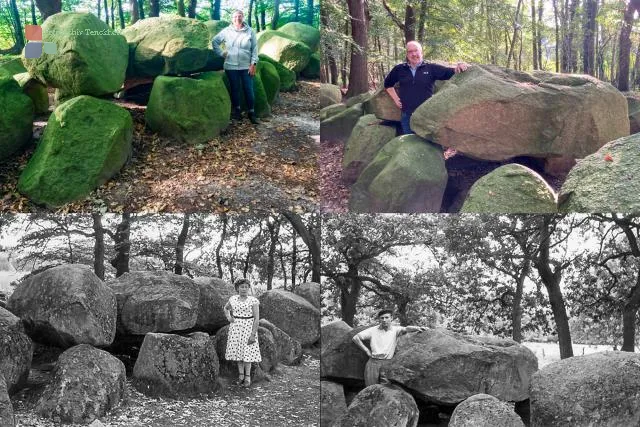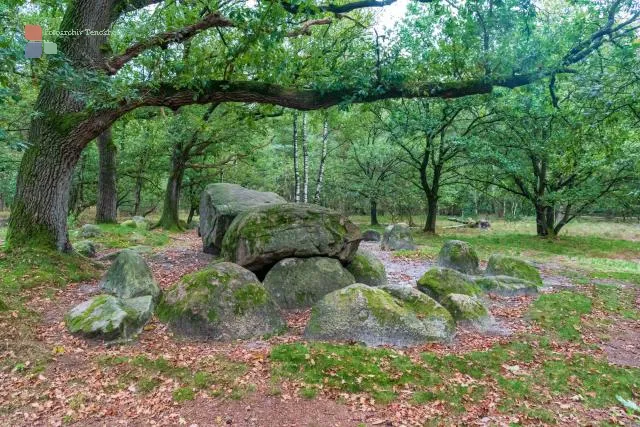Dolmens
Megalithic: The dolmens in Jejudo, an island off South Korea
Megalithic: The Poulnabrone Dolmen, the Hole of Sorrows
Megalithic culture in Carnac
In Carnac there are rows of stones (French/Alignments) of menhirs (Celtic/large stone), which consist mainly of granite rock from the Breton coast and numbered around 3000 in the years of construction. The largest menhirs are about 4 meters high and are always at the western end of the corresponding row. To the east, the menhirs become smaller and smaller in their approximately 3 km long rows until they are only half a meter high. Originally, the rows were probably even 8 kilometers long.
Volbers Hünensteine - 1956 und 2021
If you travel to the large and long graves of the road of megalithic culture between Osnabrück and Oldenburg, there is a very special Early Stone Age construction near Hüven in Emsland: the Volbers Hünensteine (also called Hüven-Nord with the Sprockhoff no. 842). In June 1956, Lisa and Rudi, Karin's parents, who lived in Lahn at the time, were photographed here. We have recreated the photos and the comparison also shows the changes in the dolmens over the past 65 years.
Route of Megalithic Culture in Emsland
From Oldenburg to Osnabrück, the route of megalithic culture in Emsland runs around 330 kilometers to 33 well-preserved Neolithic burial sites that were built around 5000 years ago. And detours from this route lead to other "dole graves" or at least to places where special rock formations serve as an indication of buildings from the Early Stone Age.
This article shows photos of the following megalithic tombs:
Megalithic culture on the Hümling
Anyone who deals with Stone Age buildings may first think of England's world-famous stone circle called Stonehenge. But also individually standing menhirs (Celtic/large stone), rows of stones (French/alignements), cromlechs (Welsh/curvature) and dolmens (Breton/stone table) are well-known designations for buildings whose age is estimated at 3000 to 5000 years. The different languages already show that these are not regionally limited architectural or structural achievements.









